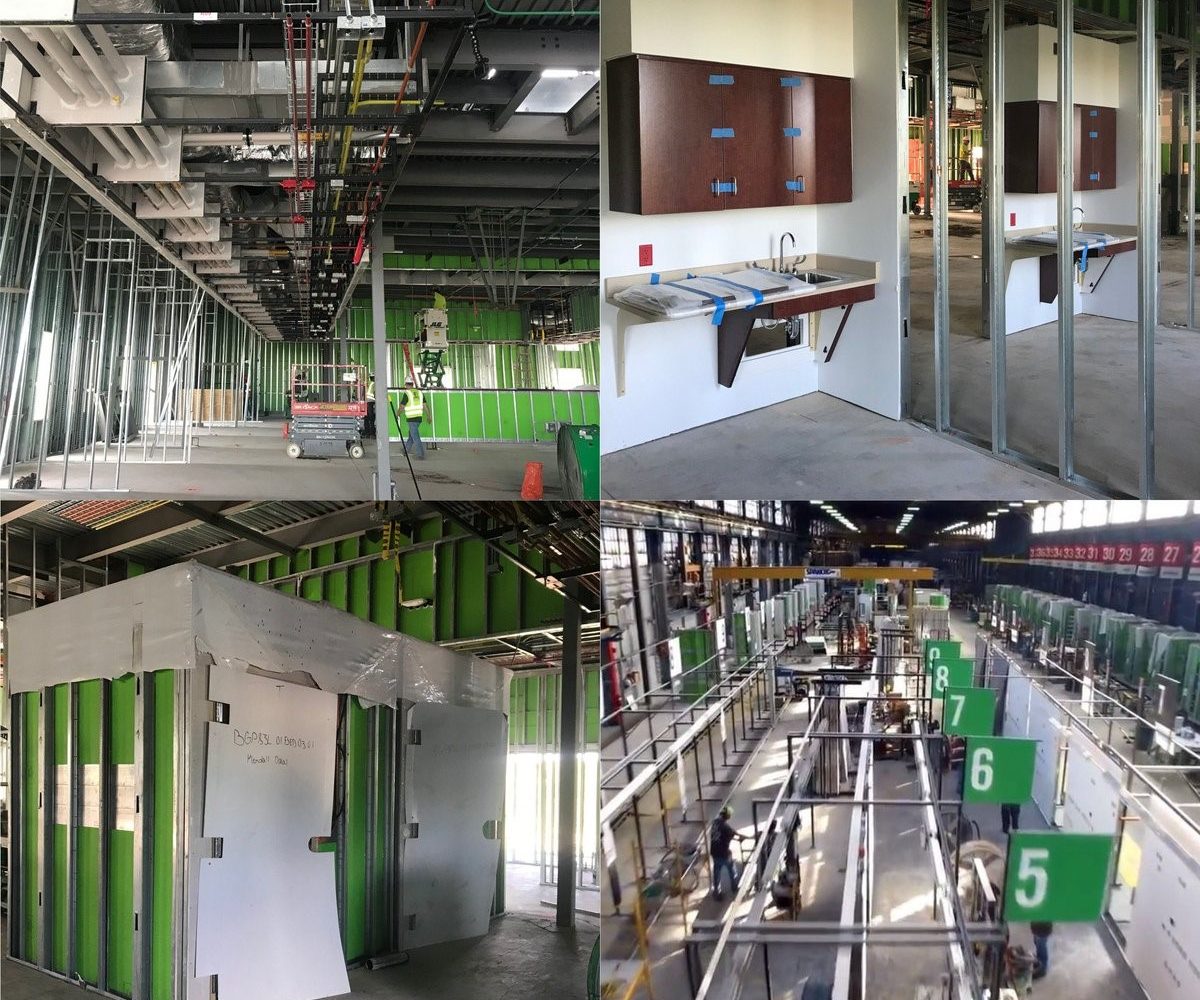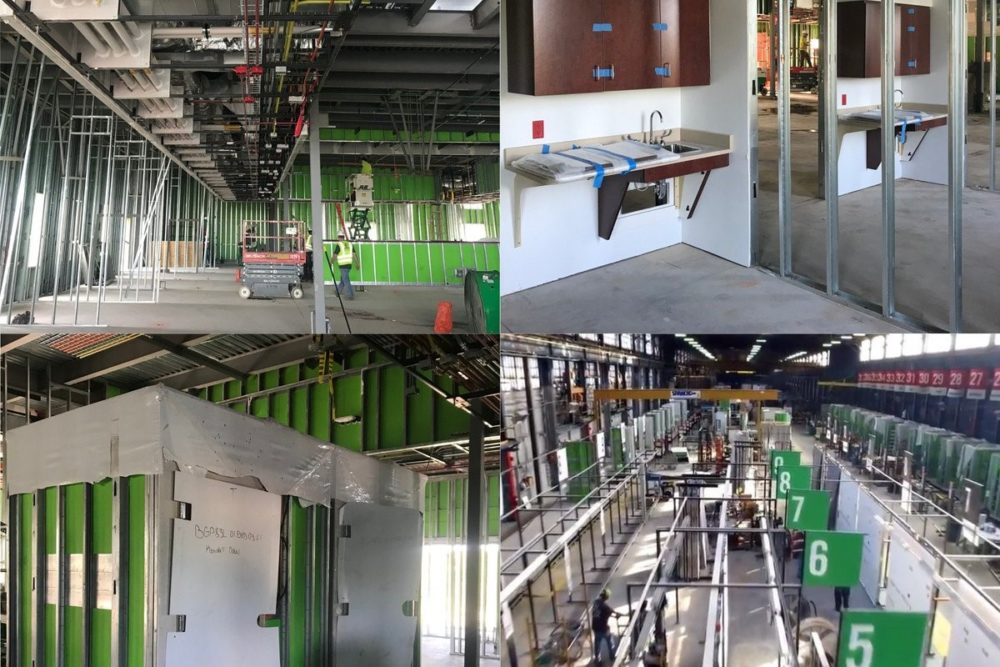TACKLING CHALLENGES IN A VERTICAL EXPANSION
A vertical expansion at Gulf Coast Region Medical Center adds nearly 67,000 square feet and 52 new beds to the 223-bed acute care hospital. New construction includes the addition of a fourth and fifth floor to the existing North Tower to house a new medical/surgical department, state-of-the-art inpatient rehabilitation center and patient rooms. The third floor at the South Tower will be a surgical intensive care unit with patient rooms. The $62M project will take 18 months to complete and is expected to create 100 new full-time jobs in Bay County.
KHS&S interior work includes framing, drywall, soffits and ceilings as well as installation of prefabricated Blox bathrooms, headwalls and casework. Three hoist platforms that cantilevered eight feet off each floor under construction were built by KHS&S and shared by all trades. Cranes lifted mechanical equipment, materials and prefabricated pods to each level to be stored in place as there was limited space at ground level.
Constructing additional floors on an existing hospital in full operation has its challenges and requires detailed communication with hospital management. While work took place on the fourth floor of the North Tower, patients on the floor below were relocated in blocks of 10 rooms. Crews cut into third floor ceilings so plumbing and electrical could be connected to the floor above. Ceilings were then repaired by KHS&S, and once patient rooms were fully restored to their pre-construction condition, they could again be occupied.
Prefabrication to Increase Productivity and Speed of Delivery
Prior to framing, KHS&S installs prefabricated Blox bathrooms on the three floors. The 52 patient bathrooms arrive as self-contained pods on rollers with tiled shower, toilet, sink, fixtures, countertop and flooring. The pod is then rolled into position for each patient room and lowered onto mortar to set in place. When electrical and plumbing work is complete, KHS&S returns to finish with insulation and drywall. A similar process takes place in each patient room for prefabricated casework that includes cabinetry, counter, sink, plumbing and electrical fixtures as well as the headwalls located behind the hospital bed that combines electrical and medical gas functions while effectively managing the cords and tubing.
While prefabricated elements are designed for Lean installation, it requires extensive coordination with MEP trades. Lean practices of Daily Huddles to discuss completed and planned work and Stand-Up Boards that illustrate weekly work plan maps and daily production goals are visible to the entire project team to help keep the job on schedule.
Interior Services
- Wall framing
- Soffits
- Ceilings
- Drywall
- Acoustical ceiling tiles
- Installation of prefabricated bathrooms, headwalls and casework












